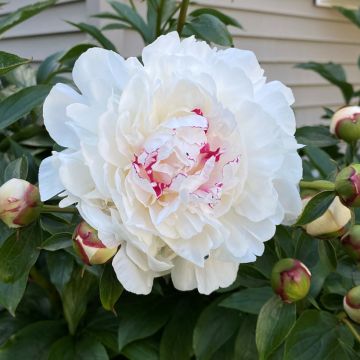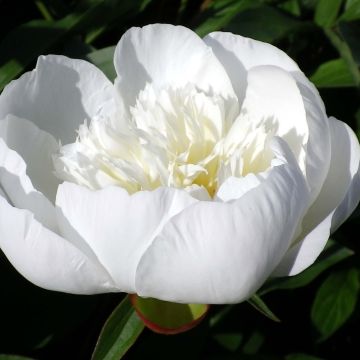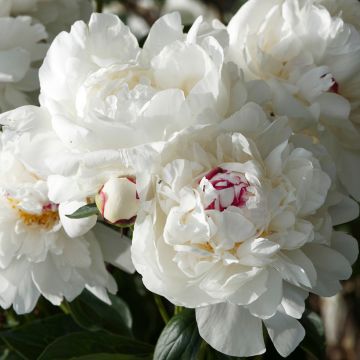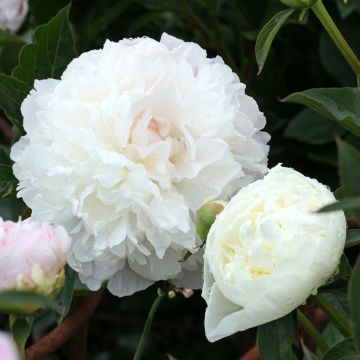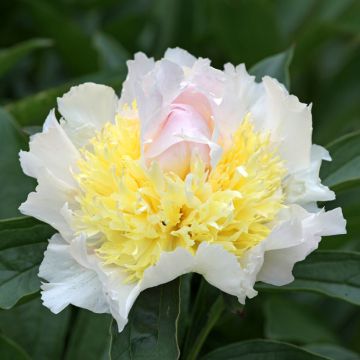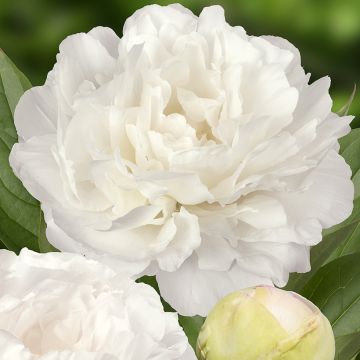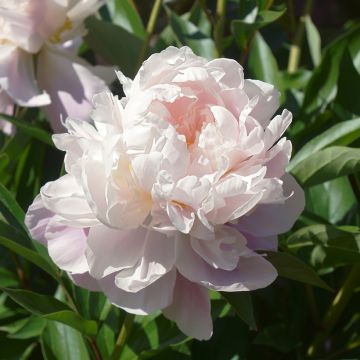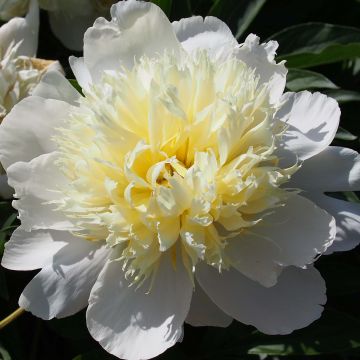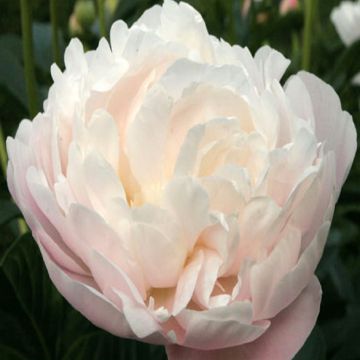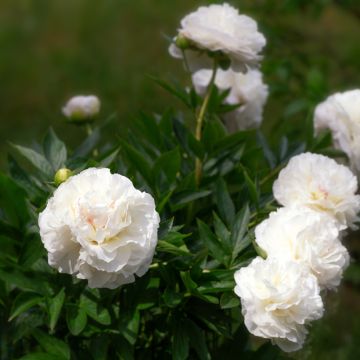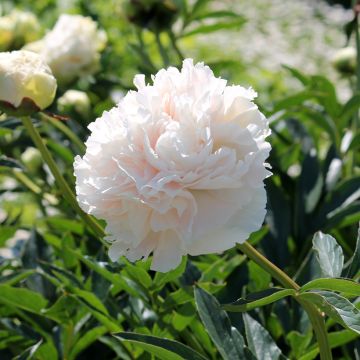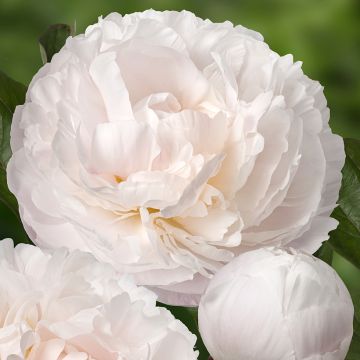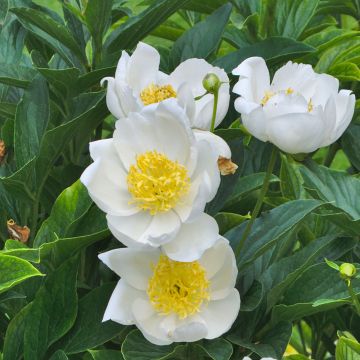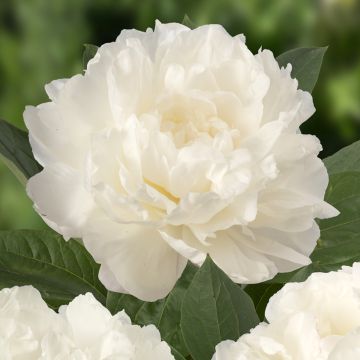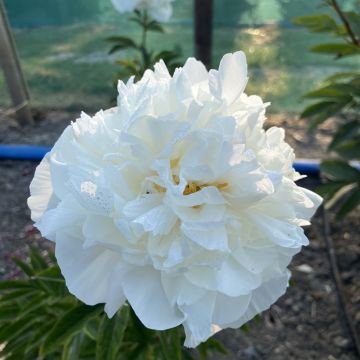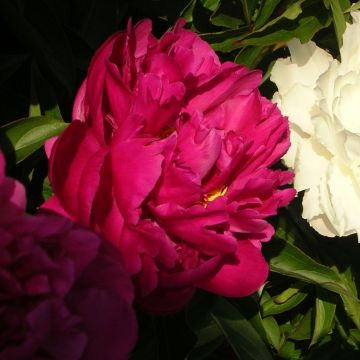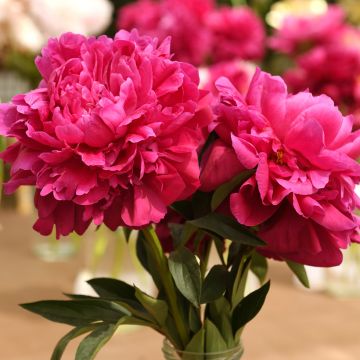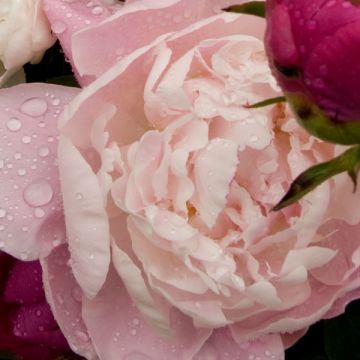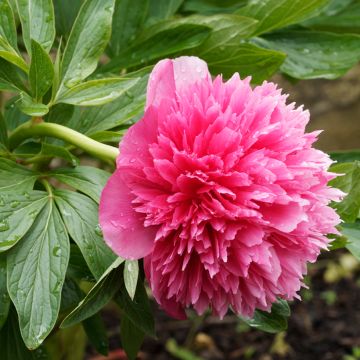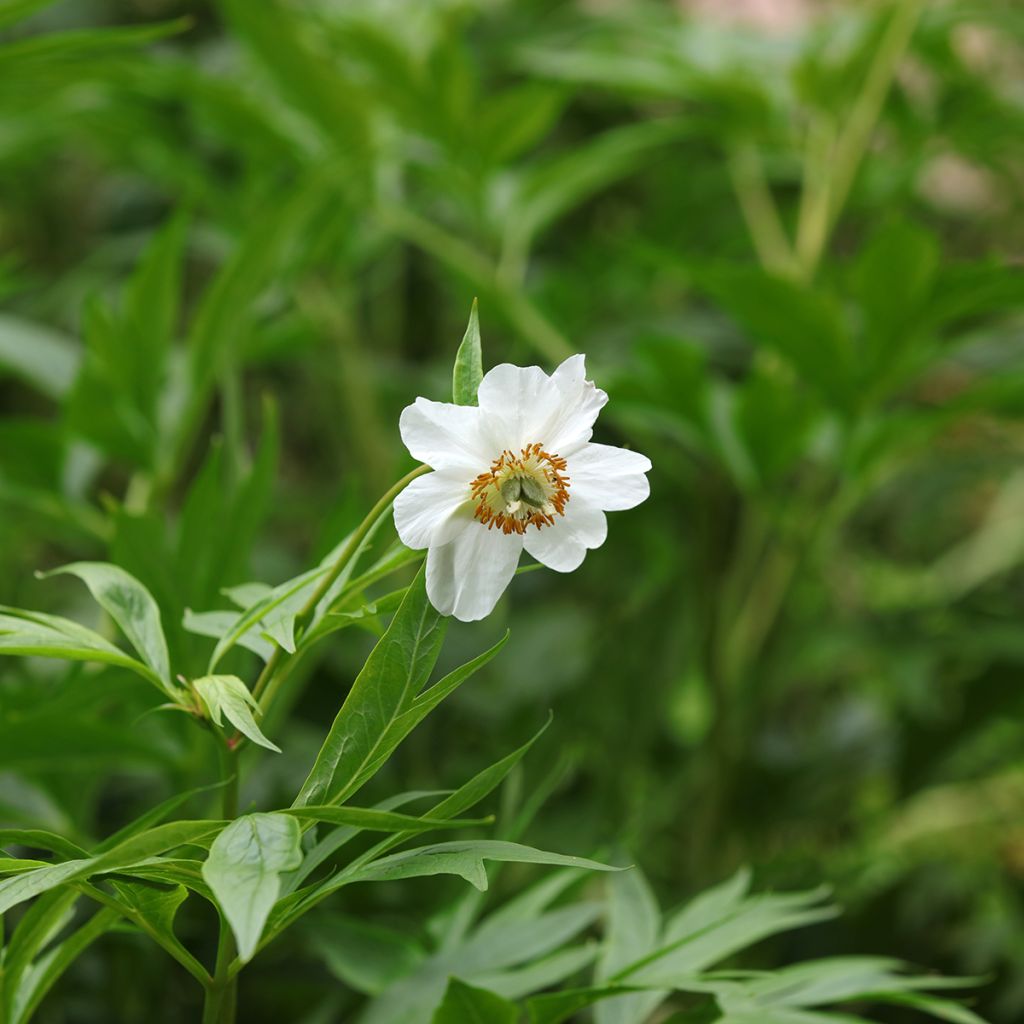

Paeonia emodi
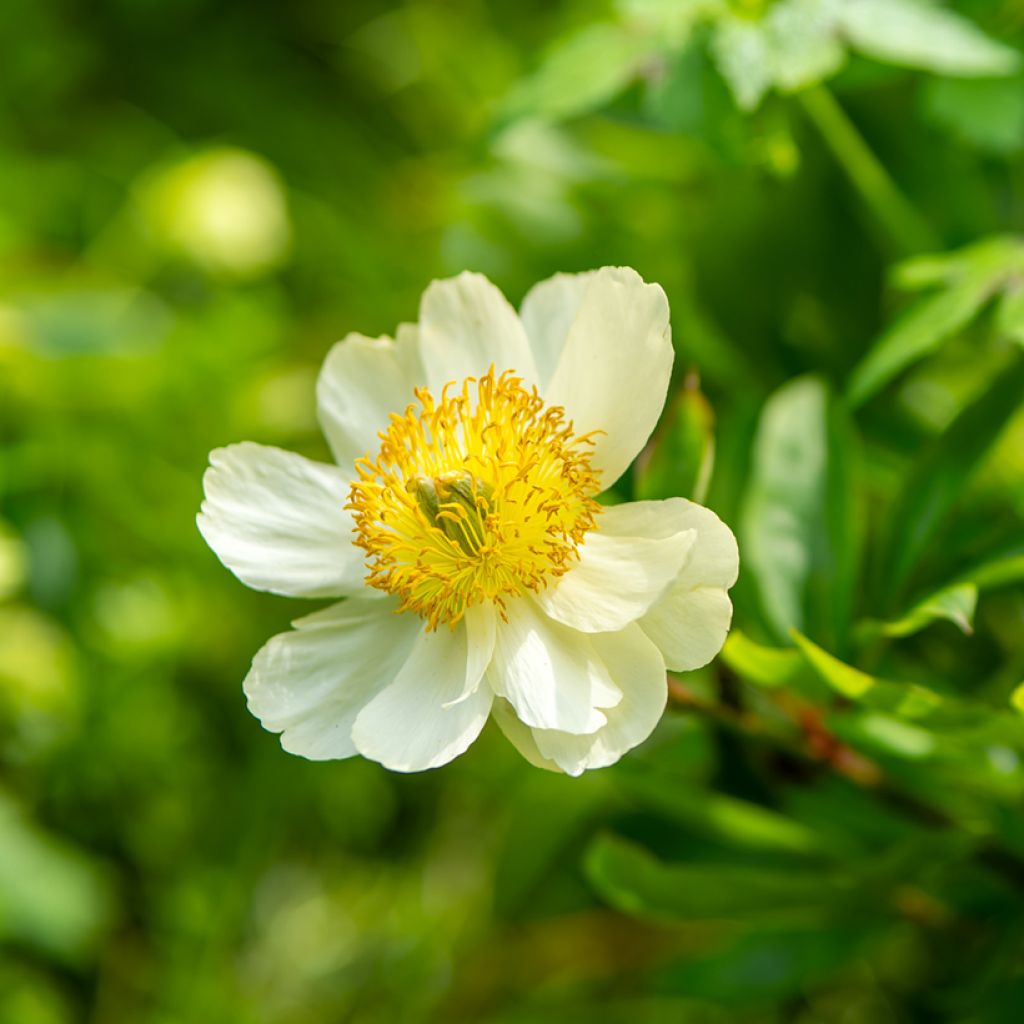

Paeonia emodi
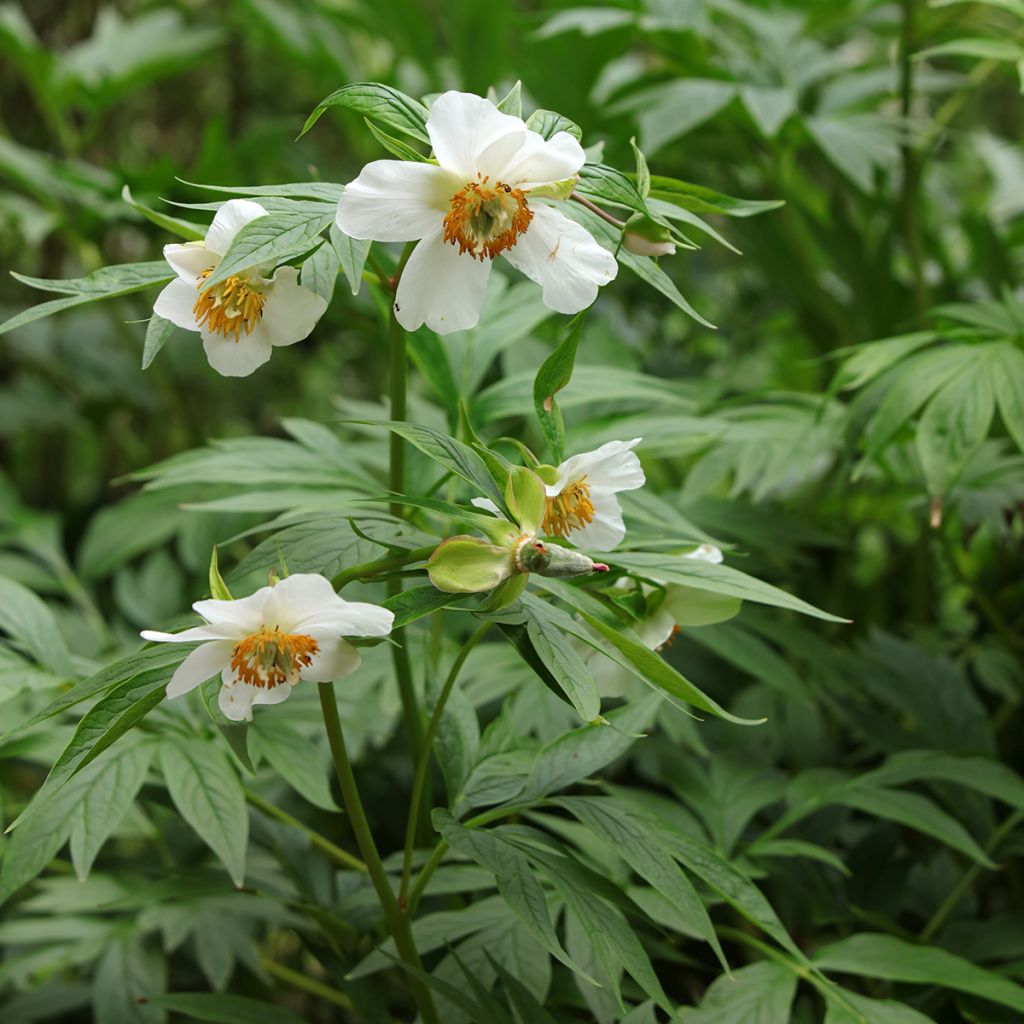

Paeonia emodi
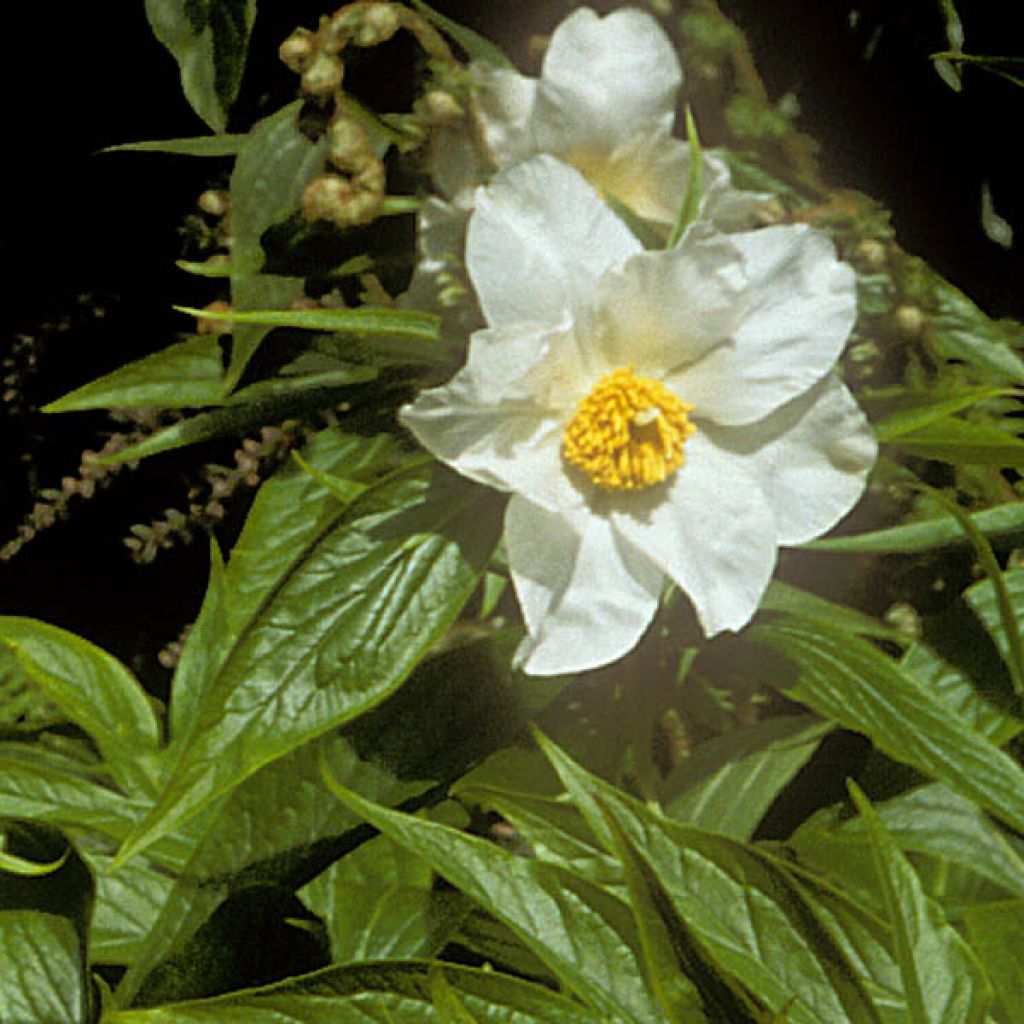

Paeonia emodi
Paeonia emodi
Paeonia emodi
Herbaceous Peony, Botanical Peony, Himalayan Peony
Why not try an alternative variety in stock?
View all →This plant carries a 12 months recovery warranty
More information
We guarantee the quality of our plants for a full growing cycle, and will replace at our expense any plant that fails to recover under normal climatic and planting conditions.
From €5.90 for pickup delivery and €6.90 for home delivery
Express home delivery from €8.90.
Does this plant fit my garden?
Set up your Plantfit profile →
Description
Paeonia emodi, also known as the Himalayan Peony, is a species rare in cultivation, valuable for shaded areas of the garden. This botanical peony is certainly of modest stature but it proves to be vigorous and very floriferous where it thrives. Its bright flowering takes place in spring, in the form of simple and lightly scented flowers, which resemble large white Japanese anemones with a large heart of golden yellow stamens. Often marked with red, shiny and finely cut foliage further enhances the elegance of this wonderful wild plant. Its cultivation, sometimes considered a bit delicate, will be better suited for an experienced gardener. This plant prefers mountainous climates, cool but well-drained soils, and sunny sites without direct sunlight.
Paeonia emodi is a perennial herbaceous plant with red tuberous roots of the Paeoniaceae family, native to the clear forests of the Afghan and northern Pakistani mountains, between 1500 and 3000 metres (4921 and 9842 feet) above sea level. It is therefore a perfectly hardy peony. Sometimes slow to establish, from spring onwards it forms a bushy clump with a slightly languid habit, a little wider than tall, reaching 50 to 75 cm (20 to 30in) in height depending on the growing conditions. Its foliage, deciduous in winter, is composed of finely cut leaves with up to 15 elliptical leaflets, narrow at the base and pointed at the top, green in colour, more or less dark, shiny, often tinged with purple. Flowering takes place in May-June, earlier or later depending on the climate, in the form of axillary flowers measuring 8 to 10 cm (3 to 4in) in diameter, with one to several flowers per stem, which is very rare among peonies. Slightly inclined towards the ground and enclosed in a crown of somewhat feathery leaf bracts, they are composed of 8 to 10 oval and concave white petals surrounding a prominent heart filled with numerous yellow stamens. After pollination by insects, this peony forms hairy, pale yellow fruits containing 3 to 5 round black seeds at maturity.
Peonies are among those plants that form the foundations of a garden. In the past every garden, from the humblest to the most elaborate, proudly displayed clumps of peonies that made their way into the house, keeping lilacs and bluebells company in bouquets. Bright and wild, the Emodi peony thrives in a cool but well-drained bed, away from the heat of the sun, paired with timeless perennials such as columbines, bellflowers, purple foxgloves, blue hostas or Christmas roses. Cultivation in pots is not recommended, as its needs will not be met. Over time the peony becomes majestic, multiplies, and blooms more and more abundantly.
The Emodi Peony is also a highly prized medicinal plant in India and Pakistan. Its species name, emodi, comes from the Latin Emodi Montes, which in ancient times referred to the mountains separating India from the current Himalayan massif. This species has given rise to superb varieties through hybridisation, such as 'White Innocence', an immense, unique peony covered in pure white flowers.
Report an error about the product description
Flowering
Foliage
Plant habit
Botanical data
Paeonia
emodi
Ranunculaceae
Herbaceous Peony, Botanical Peony, Himalayan Peony
Himalayas
Other Herbaceous and hybrid Peonies
Planting and care
Paeonia emodi is cultivated in a cool, humus-rich, well-drained soil that remains moist even in summer. According to some sources, it tolerates loamy or clayey soils, even slightly calcareous, as long as they are deep and soft. This peony hates scorching exposures: it should be planted in a semi-shaded or even shaded position, at the most with some morning sun in a cool climate. This montane plant requires cold winters to flower well. It should thrive in montane climates in Europe, even at high altitudes.
Planting period
Intended location
Care
This item has not been reviewed yet - be the first to leave a review about it.
Haven't found what you were looking for?
Hardiness is the lowest winter temperature a plant can endure without suffering serious damage or even dying. However, hardiness is affected by location (a sheltered area, such as a patio), protection (winter cover) and soil type (hardiness is improved by well-drained soil).

Photo Sharing Terms & Conditions
In order to encourage gardeners to interact and share their experiences, Promesse de fleurs offers various media enabling content to be uploaded onto its Site - in particular via the ‘Photo sharing’ module.
The User agrees to refrain from:
- Posting any content that is illegal, prejudicial, insulting, racist, inciteful to hatred, revisionist, contrary to public decency, that infringes on privacy or on the privacy rights of third parties, in particular the publicity rights of persons and goods, intellectual property rights, or the right to privacy.
- Submitting content on behalf of a third party;
- Impersonate the identity of a third party and/or publish any personal information about a third party;
In general, the User undertakes to refrain from any unethical behaviour.
All Content (in particular text, comments, files, images, photos, videos, creative works, etc.), which may be subject to property or intellectual property rights, image or other private rights, shall remain the property of the User, subject to the limited rights granted by the terms of the licence granted by Promesse de fleurs as stated below. Users are at liberty to publish or not to publish such Content on the Site, notably via the ‘Photo Sharing’ facility, and accept that this Content shall be made public and freely accessible, notably on the Internet.
Users further acknowledge, undertake to have ,and guarantee that they hold all necessary rights and permissions to publish such material on the Site, in particular with regard to the legislation in force pertaining to any privacy, property, intellectual property, image, or contractual rights, or rights of any other nature. By publishing such Content on the Site, Users acknowledge accepting full liability as publishers of the Content within the meaning of the law, and grant Promesse de fleurs, free of charge, an inclusive, worldwide licence for the said Content for the entire duration of its publication, including all reproduction, representation, up/downloading, displaying, performing, transmission, and storage rights.
Users also grant permission for their name to be linked to the Content and accept that this link may not always be made available.
By engaging in posting material, Users consent to their Content becoming automatically accessible on the Internet, in particular on other sites and/or blogs and/or web pages of the Promesse de fleurs site, including in particular social pages and the Promesse de fleurs catalogue.
Users may secure the removal of entrusted content free of charge by issuing a simple request via our contact form.
The flowering period indicated on our website applies to countries and regions located in USDA zone 8 (France, the United Kingdom, Ireland, the Netherlands, etc.)
It will vary according to where you live:
- In zones 9 to 10 (Italy, Spain, Greece, etc.), flowering will occur about 2 to 4 weeks earlier.
- In zones 6 to 7 (Germany, Poland, Slovenia, and lower mountainous regions), flowering will be delayed by 2 to 3 weeks.
- In zone 5 (Central Europe, Scandinavia), blooming will be delayed by 3 to 5 weeks.
In temperate climates, pruning of spring-flowering shrubs (forsythia, spireas, etc.) should be done just after flowering.
Pruning of summer-flowering shrubs (Indian Lilac, Perovskia, etc.) can be done in winter or spring.
In cold regions as well as with frost-sensitive plants, avoid pruning too early when severe frosts may still occur.
The planting period indicated on our website applies to countries and regions located in USDA zone 8 (France, United Kingdom, Ireland, Netherlands).
It will vary according to where you live:
- In Mediterranean zones (Marseille, Madrid, Milan, etc.), autumn and winter are the best planting periods.
- In continental zones (Strasbourg, Munich, Vienna, etc.), delay planting by 2 to 3 weeks in spring and bring it forward by 2 to 4 weeks in autumn.
- In mountainous regions (the Alps, Pyrenees, Carpathians, etc.), it is best to plant in late spring (May-June) or late summer (August-September).
The harvesting period indicated on our website applies to countries and regions in USDA zone 8 (France, England, Ireland, the Netherlands).
In colder areas (Scandinavia, Poland, Austria...) fruit and vegetable harvests are likely to be delayed by 3-4 weeks.
In warmer areas (Italy, Spain, Greece, etc.), harvesting will probably take place earlier, depending on weather conditions.
The sowing periods indicated on our website apply to countries and regions within USDA Zone 8 (France, UK, Ireland, Netherlands).
In colder areas (Scandinavia, Poland, Austria...), delay any outdoor sowing by 3-4 weeks, or sow under glass.
In warmer climes (Italy, Spain, Greece, etc.), bring outdoor sowing forward by a few weeks.

































